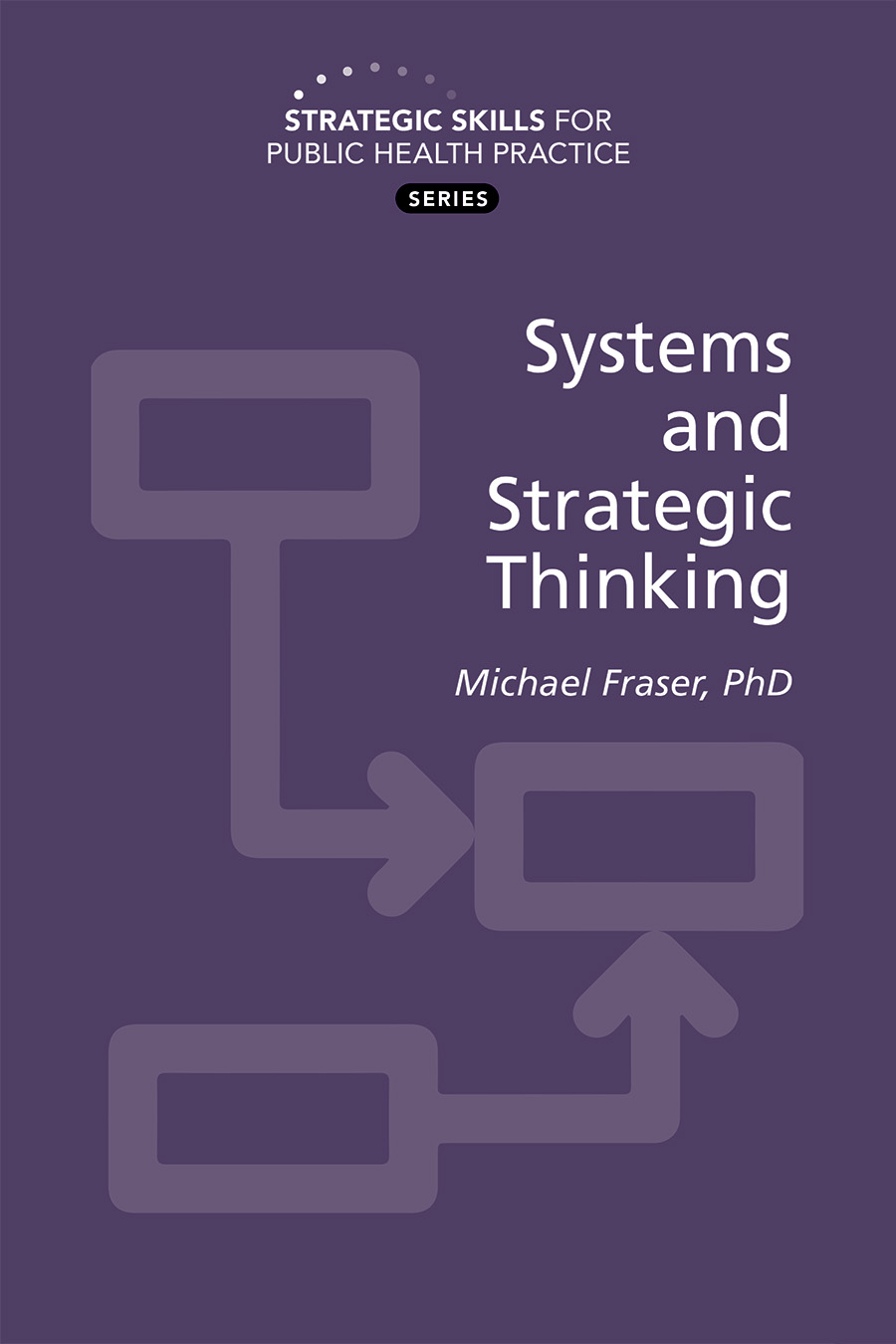
Effective public health practice requires us to take a holistic approach to the issue at hand, which makes the dual skill of systems and strategic thinking so valuable to public health professionals. We can’t know where we’re going unless we take a step back to consider whether we’re even going down the right path and who can help us along the way. I wrote Strategic Skills for Public Health Practice: Systems and Strategic Thinking, out this week, to help practitioners navigate that path with more competence and confidence.
Systems thinking and strategic thinking are closely related. Both perspectives are necessary for conversations about what we want to accomplish. Systems concern big-picture thinking while strategy concerns the future. Through systems and strategic thinking, we take a balcony approach, looking down at the individual parts of a system as they relate to the whole.
Having worked with public health agency staff for decades, I’ve observed isolation through departments, verticals, and categories that impedes significant impact. Your agency can have a stellar maternal and child health program but still have little effect on outcomes without the lens of systems and strategic thinking. Linking a breastfeeding or car seat safety initiative to less-obvious, organizationally separate programming, such as environmental health or immunization services, can yield better results across the board.
Making these connections is essential. In data systems, the same people and same records exist across an organization, from Medicaid to transportation to housing. Connecting these dots helps public health professionals view the overall problem and the most effective levers to pull, using existing resources within agencies.
As we continue to shift from individual- to community- and society-level solutions for longstanding disparities, this book aims to help public health professionals push themselves to go beyond how something is done to focus on the why. Systems and Strategic Thinking offers various on-the-ground prompts to make this distinction. In a meeting that has strayed from its purpose, call a time-out to return to your organizational mission. Use this starting point to ground your conversations so that you never lose sight of your greater purpose.
Everyone in public health is busy. That will never change. But my hope with Systems and Strategic Thinking is that this busyness can be more intentional. The stage has been set in public health with social determinants. This book is a reminder of how public health achieves desired outcomes: by asking thoughtful questions, viewing challenges from the balcony, and connecting the pieces that make systems whole.
Part of the Strategic Skills for Public Health Practice series, Systems and Strategic Thinking provides a new way of approaching problems and solutions from a perspective that emphasizes interconnectedness, relationships, patterns, and synergies. Learn more about this title and the Strategic Skills series.




